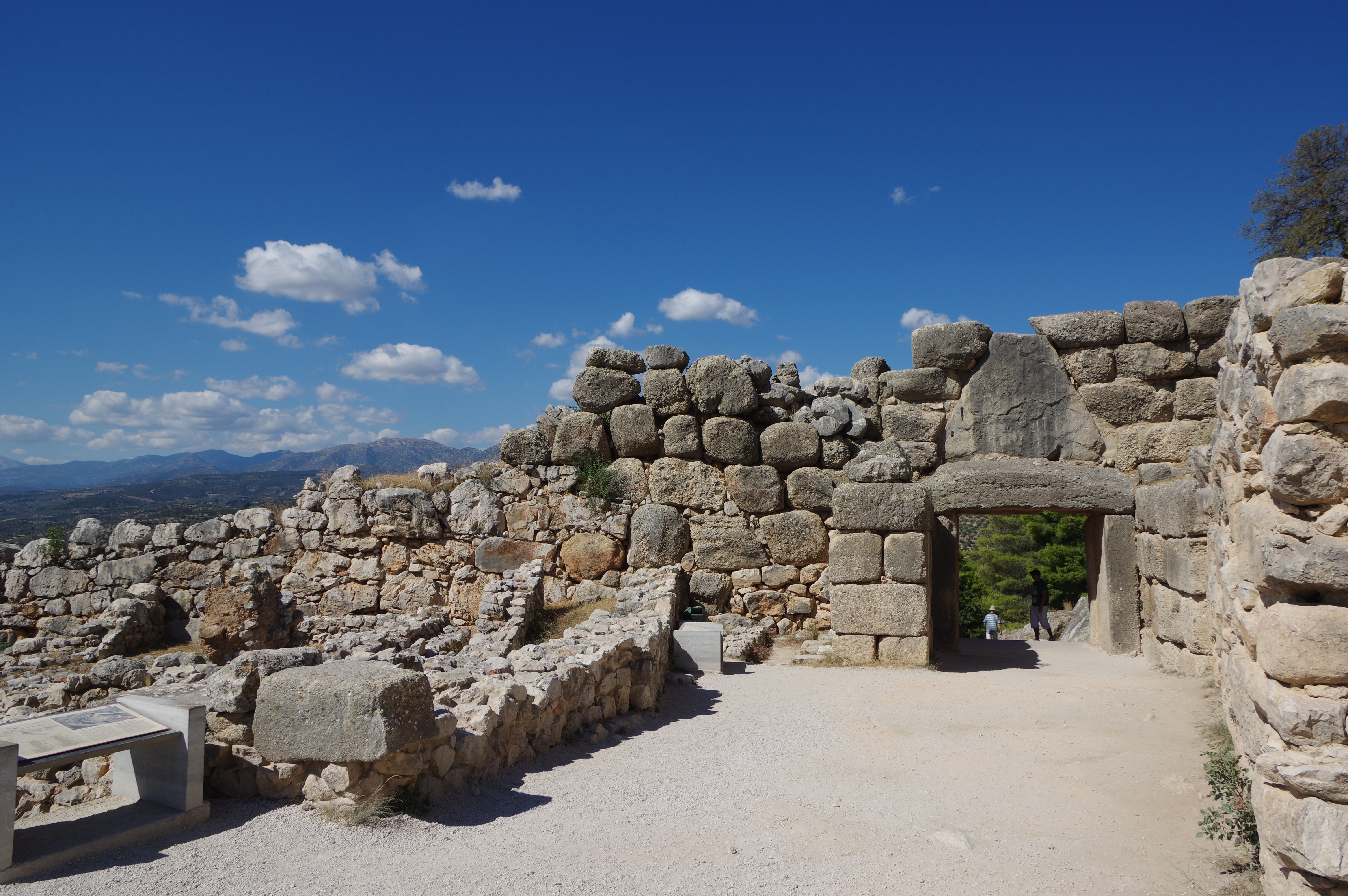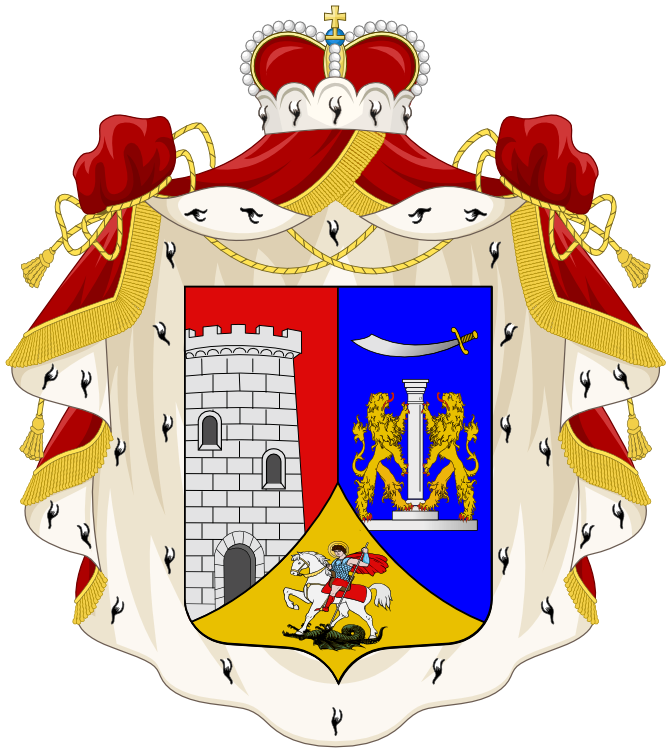|
Modinakhe Fortress
Modinakhe () is a Georgian fortress located high on the mountain in the city of Sachkhere in Imereti Imereti (Georgian: იმერეთი) is a region of Georgia situated in the central-western part of the republic along the middle and upper reaches of the Rioni River. Imereti is the most populous region in Georgia. It consists of 11 municip ..., Georgia. It is currently in ruins. History The exact date of its construction is unknown. For a long time, the Modinahe fortress served as a residence for the princes Tsereteli, until it was captured by the Russian army in 1810 in the course of Russian conquest of the Caucasus. After that, it was abandoned, and in 1991 it was badly damaged by an earthquake, today there is large debris off the walls in the lower part of the mountain. The fortress is interesting as an observation platform and as a historical place. Fortress name "Modi-nakhe", which means "to go and see", corresponds to the impregnable position of the castle, to ... [...More Info...] [...Related Items...] OR: [Wikipedia] [Google] [Baidu] |
Sachkhere
Sachkhere ( ka, საჩხერე) is a town at the northern edge of the Imereti Province in Western Georgia (country), Georgia. It is the center of the Sachkhere Municipality. Farming is a major contributor to the economy of Sachkhere. Alva LLC estimates that there are 4,000 small and medium-sized farms and ranches in the region, supported by a program of technical assistance sponsored by USAID and administered by the Farmer to Farmer, Farmer-to-Farmer program of CNFA. Science The microbiologist George Eliava (1892-1937) was born in Sachkhere. Sport Though small, Sachkhere is famous for having produced two Olympic weightlifting champions - Lasha Talakhadze and Giorgi Asanidze. See also * Sachkhere Mountain Training School * Imereti References Cities and towns in Imereti Kutaisi Governorate Populated places in Sachkhere Municipality {{Georgia-geo-stub ... [...More Info...] [...Related Items...] OR: [Wikipedia] [Google] [Baidu] |
Sachkhere Municipality
Sachkhere ( ka, საჩხერის მუნიციპალიტეტი, ''Saçxeris municiṗaliṫeṫi'') is a district of Georgia, in the region of Imereti. Its main town is Sachkhere. From the north, the municipality of Sachkhere is boarded by Oni and Ambrolauri Municipality, from the east – java and Kareli, from south – Khashuri and Kharagauli and from the west by Chiatura Municipality. Settlements Politics Sachkhere Municipal Assembly (Georgian: საჩხერის საკრებულო, Sachkheris Sakrebulo) is a representative body in Sachkhere Municipality, consisting of 33 members and elected every four years. The last election was held in October 2021. Gallery Sachkhere from Chiatura (G.N. 2009).jpg Gamoghma argveti's church.jpg Fridrich Dubois de Montpereux. Sachkhere.jpg See also * List of municipalities in Georgia (country) A municipality ( ka, მუნიციპალიტეტი, tr) is a subdivision of Georgia (coun ... [...More Info...] [...Related Items...] OR: [Wikipedia] [Google] [Baidu] |
Imereti
Imereti (Georgian: იმერეთი) is a region of Georgia situated in the central-western part of the republic along the middle and upper reaches of the Rioni River. Imereti is the most populous region in Georgia. It consists of 11 municipalities and the city of Kutaisi, which is the capital of the region. Subdivisions The Imereti region has one self governing city ( Kutaisi) and 11 municipalities with 163 administrative communities (temi), totalling to 549 populated settlements: * Eleven cities: Baghdati, Chiatura, Khoni, Kutaisi, Sachkhere, Samtredia, Terjola, Tqibuli, Tsqaltubo, Vani and Zestafoni; * Three dabas: Kharagauli, Kulashi and Shorapani (; * Villages: 535 Economy Aside from the capital Kutaisi, significant towns and regional centres include Samtredia, Chiatura (manganese production centre), Tkibuli (coal mining centre), Zestafoni (known for metals production), Vani, Khoni, and Sachkhere. Traditionally, Imereti is an agricultural region, known for its mu ... [...More Info...] [...Related Items...] OR: [Wikipedia] [Google] [Baidu] |
Georgia (country)
Georgia (, ; ) is a transcontinental country at the intersection of Eastern Europe and Western Asia. It is part of the Caucasus region, bounded by the Black Sea to the west, by Russia to the north and northeast, by Turkey to the southwest, by Armenia to the south, and by Azerbaijan to the southeast. The country covers an area of , and has a population of 3.7 million people. Tbilisi is its capital as well as its largest city, home to roughly a third of the Georgian population. During the classical era, several independent kingdoms became established in what is now Georgia, such as Colchis and Iberia. In the early 4th century, ethnic Georgians officially adopted Christianity, which contributed to the spiritual and political unification of the early Georgian states. In the Middle Ages, the unified Kingdom of Georgia emerged and reached its Golden Age during the reign of King David IV and Queen Tamar in the 12th and early 13th centuries. Thereafter, the kingdom decl ... [...More Info...] [...Related Items...] OR: [Wikipedia] [Google] [Baidu] |
Cyclopean Masonry
Cyclopean masonry is a type of stonework found in Mycenaean architecture, built with massive limestone boulders, roughly fitted together with minimal clearance between adjacent stones and with clay mortar or no use of mortar. The boulders typically seem unworked, but some may have been worked roughly with a hammer and the gaps between boulders filled in with smaller chunks of limestone. The most famous examples of Cyclopean masonry are found in the walls of Mycenae and Tiryns, and the style is characteristic of Mycenaean fortifications. Similar styles of stonework are found in other cultures and the term has come to be used to describe typical stonework of this sort, such as the old city walls of Rajgir. The term comes from the belief of classical Greeks that only the mythical Cyclopes had the strength to move the enormous boulders that made up the walls of Mycenae and Tiryns. Pliny's ''Natural History'' reported the tradition attributed to Aristotle, that the Cyclopes were t ... [...More Info...] [...Related Items...] OR: [Wikipedia] [Google] [Baidu] |
Tsereteli
The Tsereteli family ( ka, წერეთელი), also known as Tsertelev (Russian), is a noble family in Georgia (and partly, a Russian noble family) which gave origin to several notable writers, politicians, scholars, and artists. History According to traditional accounts, the family's ancestors had been chieftains in Dagestan იოანე ბატონიშვილი (Ioane Bagrationi; 1768-1830)"წერეთელი (იმერეთის თავადნი)" (Tsereteli [Princes of Imereti]) შემოკლებით აღწერა საქართველოსა შინა მცხოვრებთა თავადთა და აზნაურთა გვარებისა (''The Brief Description of the Georgian Noble Houses''). Retrieved on April 12, 2007. or Ossetia,Церетели ''Ru ... [...More Info...] [...Related Items...] OR: [Wikipedia] [Google] [Baidu] |
Russian Conquest Of The Caucasus
The Russian conquest of the Caucasus mainly occurred between 1800 and 1864. The Russian Empire sought to control the region between the Black Sea and Caspian Sea. South of the mountains was the territory that is modern Armenia, Azerbaijan, Georgia, and parts of Iran and Turkey. North of the mountains was the North Caucasus region of modern Russia. The difficult conquest of the intervening mountains is known as the Caucasian War. Multiple wars were fought against the local rulers of the regions, as well as the dominant powers, the Ottoman Empire and Qajar Iran, for control. By 1864 the last regions were brought under Russian control. Early history Russians first appeared in the Caucasus region in the 9th century when some Rus’ went down the Volga to trade around the shores of the Caspian Sea. This evolved into two great raids in 913 and 943. The last raid seems to have been in 1041. See Caspian expeditions of the Rus'. Also at this time the Rus’ held Tmutarakan on the Tama ... [...More Info...] [...Related Items...] OR: [Wikipedia] [Google] [Baidu] |
Ahmad Ibn Arabshah
Abu Muhammad Shihab al-Din Ahmad ibn Muhammad ibn Abd Allah ibn Ibrahim also known as Muhammad ibn Arabshah () (1389–1450), was an Arab writer and traveller who lived under the reign of Timur (1370–1405).AKA, ISMAIL. 1996. “THE AGRICULTURAL AND COMMERCIAL ACTIVITIES OF THE TIMURIDS IN THE FIRST HALF OF THE 15TH CENTURY”. Oriente Moderno 15 (76) (2). Istituto per l'Oriente C. A. Nallino: 9. https://www.jstor.org/stable/25817400. He was born and grew up in Damascus. Later when Timur invaded Syria, he moved to Samarkand and later to Transoxiana. He later moved to Edirne and worked in the court of Sultan Mehmed I translating Arabic books to Turkish and Persian. He later returned to Damascus after having been absent from the city for 23 years. Later he moved to Egypt Egypt ( ar, مصر , ), officially the Arab Republic of Egypt, is a transcontinental country spanning the northeast corner of Africa and southwest corner of Asia via a land bridge formed by the Sinai Penin ... [...More Info...] [...Related Items...] OR: [Wikipedia] [Google] [Baidu] |


